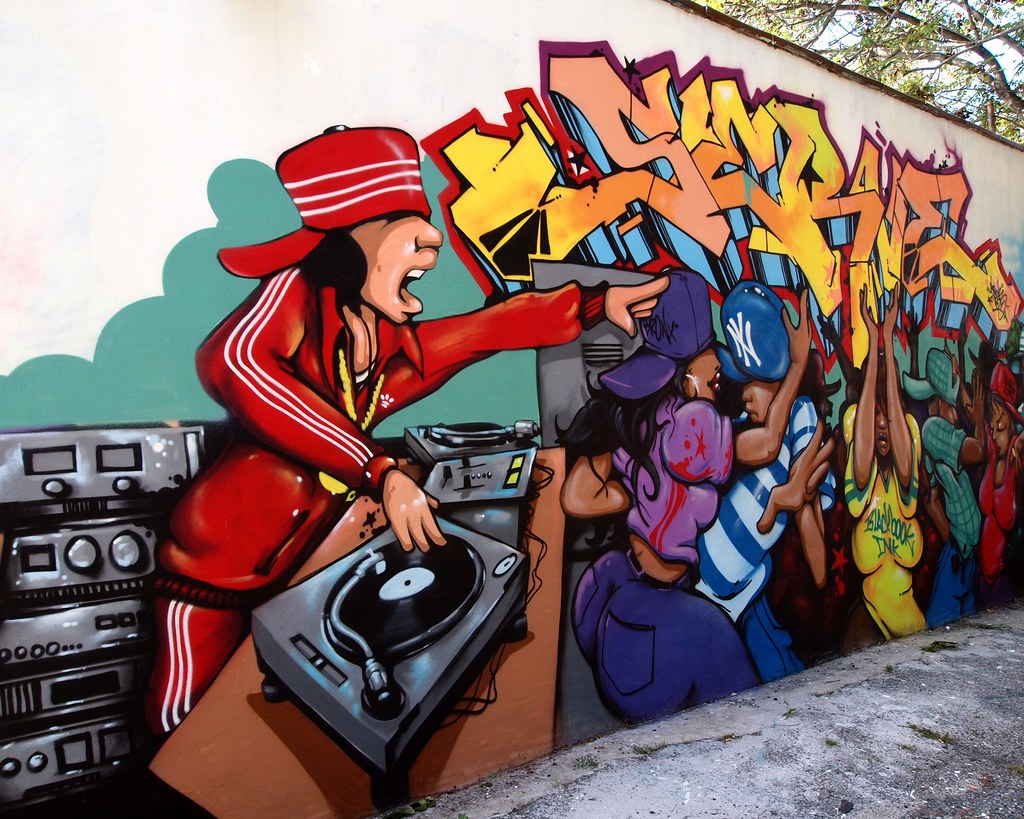Hip Hop Culture: The Connection Between Breakdancing.

Hip Hop Culture: The Connection Between Breakdancing, Graffiti, Rap, and DJs.
Hip-hop culture is much more than a musical style; it's a global movement that has profoundly influenced society, fashion, art, and, of course, dance.
Originating in the Bronx, New York, in the 1970s, Hip-Hop culture is made up of four fundamental elements: Breakdancing, graffiti, rap, and DJing.
—
The Origins of Hip-Hop: A Cultural Movement
Hip-hop culture was born on the streets of the Bronx in the 1970s, during a time of economic and social hardship. It was a form of expression for marginalized youth seeking ways to express their feelings, ideas, and struggles. Hip-hop, at its core, is a reflection of the realities of urban life, resistance to oppression, and the desire to belong to a community.
Breakdancing, graffiti, rap, and DJing were all born from this need among young people to express themselves. Each of these elements was fueled by creativity and the desire to stand out in an environment that often offered few opportunities.
What began as a form of resistance in the streets quickly transformed into a global culture that continues to influence millions of people around the world today.
—
1. Breakdance: The Dance of the Street
Breakdancing, also known as breaking, is a component of hip-hop culture characterized by its energy, acrobatics, and style. Although the exact origin of breakdancing is unclear, it is known to have been created by young people from the streets of the Bronx, who used it as a form of competition and personal expression.
Over the years, breaking has become one of the most influential dances and has been brought to international stages, both in competitions and in films, such as **"Breakin'"** and **"Beat Street"**.
Breakdancing is, in many ways, one of the purest representations of hip-hop culture. Through their movements, dancers tell stories without words, using their bodies as a canvas.
2. Graffiti: The Visual Art of Hip-Hop
Graffiti is another fundamental pillar of hip-hop culture. In its early days, graffiti artists used city walls as a canvas to capture their messages, signatures, and designs, seeking a way to make their presence visible in a society that marginalized them.
Graffiti artists became "street artists," leaving their mark on city walls and trains with artwork that was not only decorative but also loaded with social and political messages.
Although often associated with vandalism, graffiti has been recognized worldwide as a legitimate art form.
3. Rap: The Voice of the Movement
**Rap**, or **MCing**, is the third fundamental element of Hip-Hop culture.
Born from the need of young people to tell their stories through words, rap became the voice of the street, a means to express the realities of life in urban neighborhoods.
Early rappers such as DJ Kool Herc and Grandmaster Flash pioneered the creation of a style of music based on rap,
Rap isn't just music; it's a vehicle for social, political, and cultural messages. Over the years, artists like Tupac Shakur, Eminem, Nas, and many others have used rap to tell life stories.
Rap lyrics reflect the realities of urban life
—
4. DJing: The Heart of Rhythm
DJing, or music production, is the fourth and final pillar of hip-hop culture. DJs were the first to mix and create music live, using vinyl records and techniques like scratching and beatmatching.
In the beginning, DJs were in charge of livening up parties and block parties in the Bronx, creating a unique atmosphere for people to gather and dance.
The ability to mix and create new sounds was what allowed Hip-Hop culture to expand and evolve. Artists like **Grandmaster Flash**, **Afrika Bambaataa**, and **DJ Kool Herc** are some of the pioneers who transformed DJing into an art form in itself.
—
The Interconnection Between the Elements of Hip-Hop
Although each of these elements has its own identity and expression, they are all interconnected and influence each other. At a typical block party in the neighborhoods of New York, elements of breakdancing, graffiti, rap, and DJing combined to create a unique experience, later called Jams.
Rappers jammed to DJ beats, while dancers competed to the music, and graffiti artists painted the walls.
This interconnectedness between the four elements is what makes Hip-Hop culture so powerful and unified. Each of these components contributes to the movement's identity and philosophy.
—
Conclusion: A Global and Timeless Movement
Hip-hop culture continues to live and evolve, influencing generations of young people around the world. What began on the streets of the Bronx has transcended borders, becoming a global phenomenon.
The four elements of Hip-Hop—Breakdancing, graffiti, rap, and DJing—remain the pillars that support this movement.
Here you can develop your skills and join a culture that transcends generations.
Ready to join the Hip-Hop movement? Come express yourself with us by discovering more items. here!